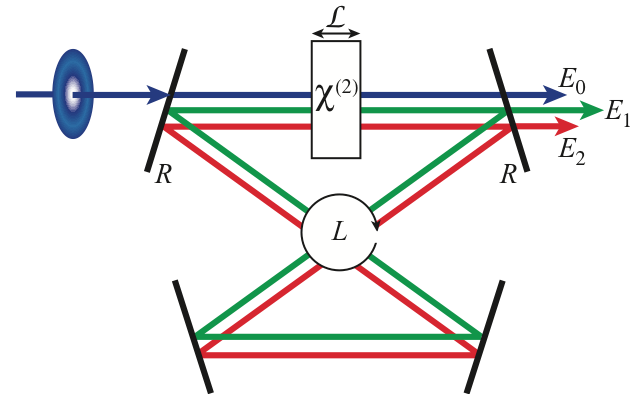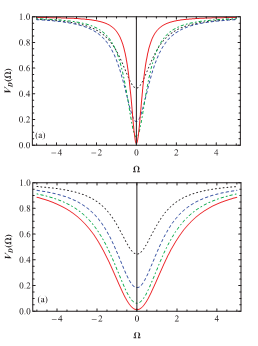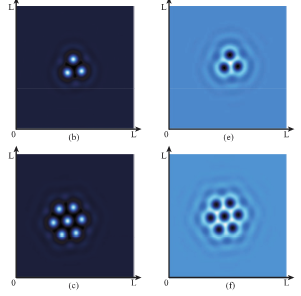Quantum entanglement and spatial structures in optical parametric oscillators
The interaction of laser light with a second order nonlinear crystal produces two, entangled, lower-frequency photons via the process of spontaneous parametric down-conversion. An optical parametric oscillator (OPO) can increase the number of entangled photon pairs generated by using stimulated parametric down-conversion inside a cavity (Figure 11). The quantum nature of the interaction process manifest itself in the entanglement and squeezing of the quantum fluctuations below threshold (Figure 12). This does not prevent typical semiclassical effects such as bright and dark cavity solitons to appear in these systems (Figure 13).
 |
 |
 |
| Fig. 11: An optical parametric oscillator where a pump (blue) is down-converted in two beams (red and green) | Fig. 12: Quadrature squeezing spectrum for the singly resonant (top) and doubly resonant (bottom) cases | Fig. 13: Conglomerates of bright (left) and dark (right) cavity solitons |
Recent References
D. Cuozzo and G.-L. Oppo, “Two-color continuous-variable quantum entanglement in a singly resonant optical parametric oscillator”, Phys. Rev. A 84, 043810 (2011).
G.-L. Oppo, A. M. Yao and D. Cuozzo, “Self-organization, pattern formation, cavity solitons, and rogue waves in singly resonant optical parametric oscillators”, Phys. Rev. A 88, 043813 (2013).